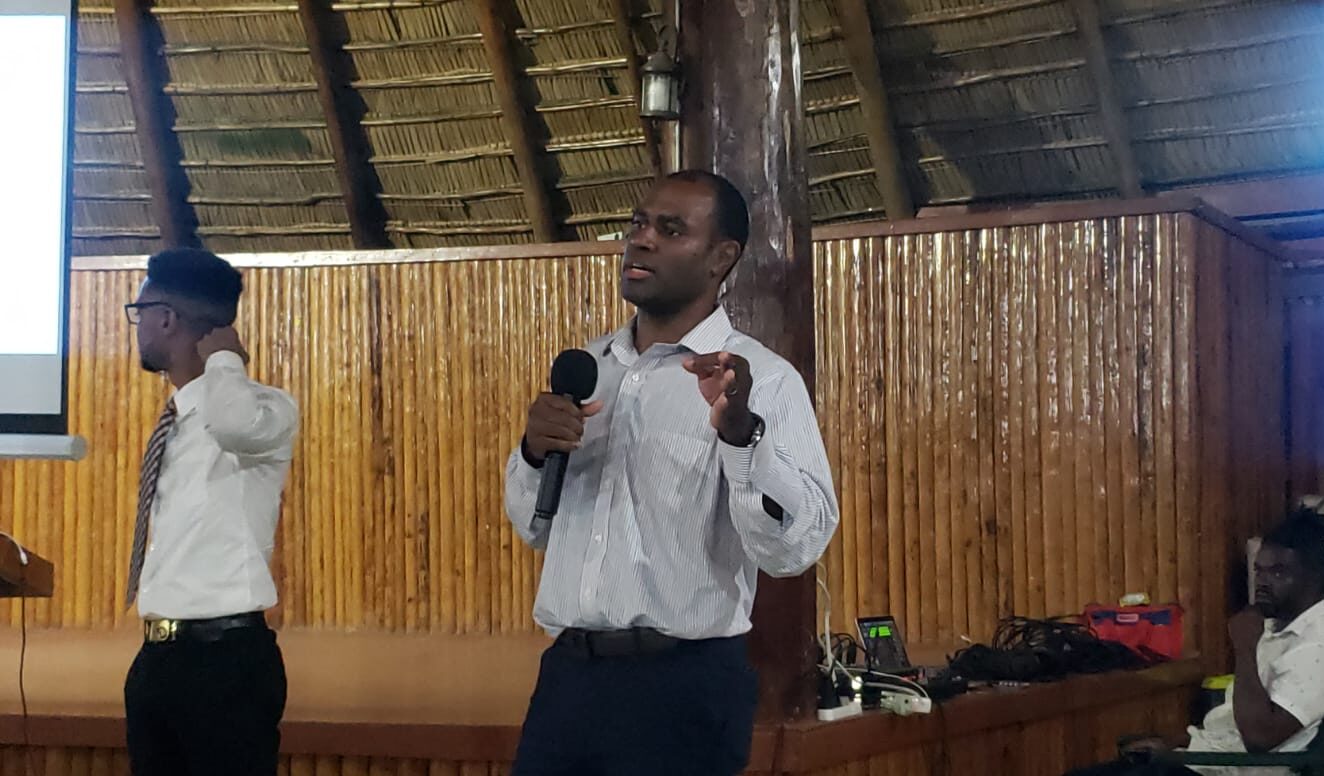A key provision in ExxonMobil’s permit for the massive Yellowtail project offshore Guyana requires the company to have a capping stack maintained, tested, and stored in country. And this, according to Exxon’s Project Manager, Anthony Jackson, should be considered “a very big deal.”
Jackson relayed this on Sept. 13, at a scoping meeting for Exxon’s sixth planned development – Whiptail – held in Georgetown. The focus was on Exxon’s assured capacity to handle the unlikely event of an oil spill offshore the South American country.
“A capping stack was committed to be brought into the country…which is a very big deal, it’s a big deal…All over the world, where we do oil and gas, very few countries have capping stacks in country,” he said.
Capping stacks were created post the Gulf of Mexico, Macondo incident. It is placed over the blown-out well as a cap to stop or redirect the flow of hydrocarbons and to buy time for engineers to permanently seal the well. And these are not needed when drilling; they merely act as a centerpiece of a containment system kept in readiness at an onshore location, only deployed if the subsea blowout preventer fails to serve its purpose. When that critical piece arrives in Guyana, the country would be the only oil-producing nation in the region to readily have one available. Having the equipment is a condition of the Yellowtail production license.
Standard industry practice is that a prescription is paid for a capping stack. So, in the event of a disaster, it would be transported to the well that needs to be plugged. Jackson noted that Exxon currently has about three prescriptions for its operations.
“[So] we have a well thought out plan that we would put in place in the event of an unplanned release,” Jackson continued.
It was noted however that this could sometimes take days or even weeks to arrive at the destination, leaving room for irreversible damage to the environment. But according to Jackson, Exxon’s priority is preventing such a disaster. “We at ExxonMobil, we will do everything in our power to mitigate an unplanned release of hydrocarbons into the environment,” he pointed out.
Guyana remains protected from any liability with three layers of defense should an oil spill occur; a sum that amounts in excess of US$20 billion. There is a US$2 billion guarantee, to be tapped if Exxon’s insurance policy and its assets are not enough to respond to the impacts and fallout associated with an oil spill. The environmental liability insurance is US$600 million. Once this runs out, Exxon would have to rely on its assets and those of its Stabroek Block partners, Hess and CNOOC, to cover additional expenses. This total is in excess of US$18 billion.
Background on Whiptail project
The Whiptail Development Project, with an estimated development budget nearing US$13 billion will be positioned approximately 195 kilometres northeast of Guyana’s capital, Georgetown. The development will exploit three vast fields: Whiptail, Pinktail, and Tilapia. With plans to drill up to 72 wells, the project’s scale is massive.
Scheduled to be fully operational by 2027, production activities are set to commence in late 2027 or 2028, lasting for a minimum of 20 years.
Exxon and its partners are compiling a field development plan (FDP) which will be reviewed alongside the EIA. A decision is expected early 2024.




